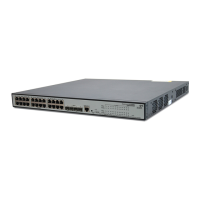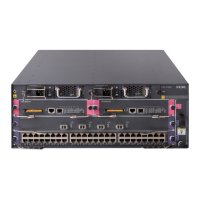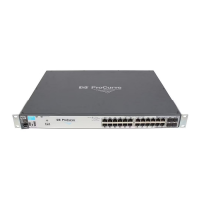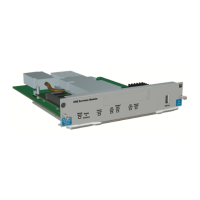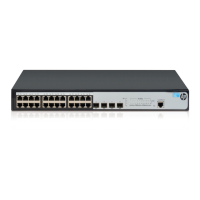215
Basic management TLVs
Organizationally (IEEE 802.1 and IEEE 802.3) specific TLVs
LLDP-MED (media endpoint discovery) TLVs
Basic management TLVs are essential to device management. Organizationally specific TLVs and
LLDP-MED TLVs are used for enhanced device management; they are defined by standardization or other
organizations and thus are optional to LLDPDUs.
1. Basic management TLVs
Table 90 lists the basic management TLV types. Some of them must be included in every LLDPDU.
Table 90 Basic LLDP TLVs
T
Chassis ID Bridge MAC address of the sending device.
Mandatory
Port ID
ID of the sending port.
If the LLDPDU carries LLDP-MED TLVs, the port ID TLV carries
the MAC address of the sending port or the bridge MAC in
case the port does not have a MAC address. If the LLDPDU
carries no LLDP-MED TLVs, the port ID TLV carries the port
name.
Time To Live Life of the transmitted information on the receiving device.
End of LLDPDU Marks the end of the TLV sequence in the LLDPDU.
Port Description Port description of the sending port.
Optional
System Name Assigned name of the sending device.
System Description Description of the sending device.
System Capabilities
Identifies the primary functions of the sending device and the
enabled primary functions.
Management Address
Management address used to reach higher level entities to
assist discovery by network management, and the interface
number and object identifier (OID) associated with the
address.
2. IEEE 802.1 organizationally specific TLVs
Table 91 IEEE 802.1 organizationally specific TLVs
T
Port VLAN ID PVID of the sending port.
Port And Protocol VLAN ID Port and protocol VLAN IDs.
VLAN Name A specific VLAN name on the port.
Protocol Identity Protocols supported on the port.
NOTE:
HP V1910 Switch Series can receive but cannot send protocol identity TLVs.
3. IEEE 802.3 organizationally specific TLVs
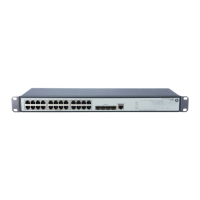
